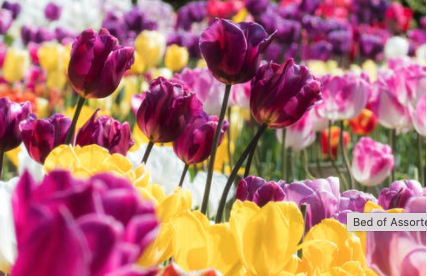
As many people have recently got new pets and to inform older owners we thought we write some information about potentially poisonous dog plants. Also, many people are spending more and more time in their gardens or out in the local countryside due to the pandemic and maybe planning what to plant in their gardens or places to walk.
Our pets are naturally curious but not everything is harmless to them. Different plants flower at different times of the year although their seeds and bulbs may always be present. Plants also vary in attractiveness to dogs and a shrub may sit in your garden for years undisturbed while a fallen conker or acorn may appear enticing the moment it hits the ground. Deciding what plants to keep in your garden will not only depend on the toxicity of the plant but also on the inquisitiveness of your pet.
As with toxic substances, effect is related to the quantity eaten, some poisonous dog plants being more poisonous than others and even a small amount of ingestion of these may cause severe signs and symptoms. Others may be less toxic but best too avoid as they can cause mild tummy upsets.
Especially make sure you’re pets don’t get their paws on any plants or bulbs while preparing your gardens as many are poisonous. It’s best to keep your pet out of reach of the bulbs or keep the bulbs in a sealed container and take each one out as you plant it.
Although serious cases of poisoning are rare, if you do think your pet has eaten, touched or inhaled anything they shouldn’t have, its best to call a vet for advice. (What toxin, when, how much, signs and symptoms). Never try to make your dog sick as trying to do so can cause other complications which may harm your pet.
Here is a list I have made a list of the spring plants. This may not be a comprehensive list, and not in any particular order and should be read in conjunction with my blog on poisonous plants that are around all year. It’s useful to get a plant identification book/app if concerned or unsure about which plants are which.
Tulips (Tulipa)
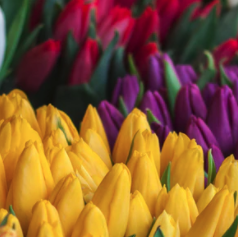
The bulbs of these plants are the most toxic but all parts of this plant can be toxic if eaten in large quantities. Tulips contain allergenic lactones which if swallowed can irritate a dog’s mouth and gastro intestinal tract. Normally they will only experience drooling, sickness and diarrhoea but more seriously heart problems and difficulty breathing are signs of tulip poisoning. Tulips are easily removed by placing black plastic covering over the bulbs during the growing season. This will block out all the sunlight and will prevent the bulbs from growing. Dig out unwanted bulbs in autumn.
Many tulips have a distinct cup shape that make them easy to identify but others have a slightly different shape.
Snowdrops (Galanthus)
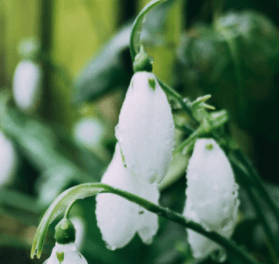
These well known plants are also present in winter as well as spring. All the snowdrop plant is toxic but it’s usually the bulbs that are most toxic to pets. Snowdrops can be removed easily and without chemicals as for tulips. Common snowdrops are tiny plants that produce one small white flower which hangs down like a drop prior to opening.
Azalea/Rhododendron (Rhododendron spp)
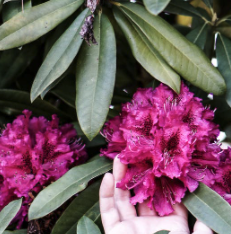
These are highly poisonous dog plants even if only a few leaves are eaten. Azalea flowers are tubular or bell shaped and often fragrant with pointed and narrow leaves.
Azaleas can be killed by over fertilization as they are especially susceptible to excess amounts of sulphur. Apply excess elemental sulphur to the azalea and once it is dead it can easily be pulled up by its trunk, root system and all.
Rhubarb (Rheum)
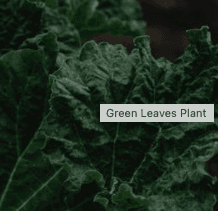
These plants are also present in summer. The leaves are poisonous to dogs whether raw or cooked. Rhubarb is a perennial vegetable with long crimson or light green stalks topped by large ruffled green leaves.
Gardeners must take proactive steps to remove rhubarb and make sure it does not grow back. Remove all the rhubarb stalks and leaves. Dig around the base of the rhubarb rocking the plant to loosen from the soil, continue digging until possible to remove the rhubarb stalks and roots. Try not to snap stalks. Dig 4 ft round the rhubarb plants to remove every root. Area can be then sprayed with lawn weed killer.
Geranium (Pelargonium spp)
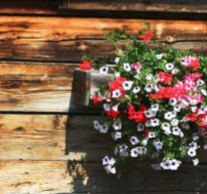
These plants are also present in summer and all parts of this plant are poisonous to dogs. Geraniums have lobed, sometimes pointed, leaves that are mid green in colour. Their clusters of single or double flowers bloom in shades of red, pink, mauve, purple or white,
Get rid of geraniums using a glyphosate spray such as Round Up. It may take two or three shots a few days apart.
Ragwort (Senecio Jacobaea)
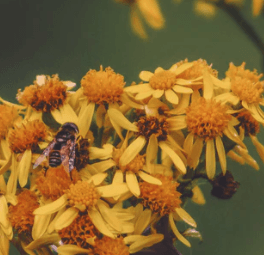
These plants are also present in summer and autumn. ALL parts of this plant are poisonous to dogs and even only small doses can be fatal. Ragwort is a tall erect plant, up to 3 ft, bearing large flat topped clusters of yellow daisy like flowers.
Ragwort control is by spraying or wiping with chemicals that prevent its growth. Live or dead ragwort can also be removed by digging out of the ground.
Daffodil (Narcissus)
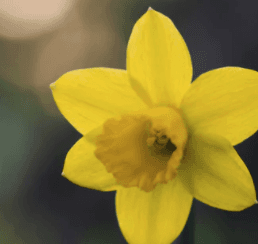
All parts of this well known plant are poisonous. Dogs can be attracted to and eat the bulbs however even a small bite can prove fatal to a small animal. Water in which cut daffodils have stood should be avoided as this too is toxic to pets. A dog that has been poisoned by daffodils may develop a tummy upset and vomit and make them very sleepy and unstable. Daffodil toxins can also cause fits. Daffodils leaves are long and flat and the blossoms – six petals and trumpet in the middle-are bright yellow or white. The bulbs look like onions – don’t mistake them.
The most successful way to get rid of daffodils is to dig at least 6 inches wider than the bulb and deep enough to get all the roots.
Hyacinth (Hyacinthus Orientalis)
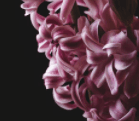
The bulbs of these plants are toxic to dogs. Hyancinths are highly fragrant, bell shaped flowers with reflexed petals. The waxy densely packed florets come in a variety of shades. The hyacinth bulb is a light purple or cream in colour and is covered with dry papery skin like layers.
Removing hyacinths manually is a bit of a chore but works better than herbicides. This is because of the waxy bulb coating which protects the bulbs in winter but also provides an effective barrier against chemicals. Dig at least 6 inches down and pull out as many of the bulbs as possible.
Iris and Gladioli (Iridaceae)
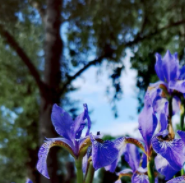
All parts of these plants are poisonous to dogs but in particular the bulbs as these contain the highest concentration of chemicals. Gladioli have funnel shaped blooms that cover most of the stem opening consecutively from the bottom of the stem to the top. Iris flowers have 3 petals that grow upward called standards and 3 downward growing petals called falls.
Using a glypphosate based herbicide will kill bulbs if used when the gladioli are actively growing.
Bluebells
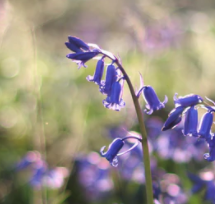
The plants and bulbs contain ‘scillatens’ which reduce the heart rate. This can cause vomiting, diarrhoea and disorientation. Bluebells have narrow leaves with a deep violet blue narrow tubular bell flowers with tips that curl back. The sweet scented flowers are on one side of the drooping stems.
Bluebells can be removed by loosening the soil around the bulbs to a good depth and removing all the bulbs and underground parts. Dispose of the bulbs by placing them in a black plastic sack and leave for a year before composting. Never discard unwanted bluebell bulbs in the countryside.
This is just a springtime list of poisonous dog plants. In future we will do lists for the other seasons as well as what to watch out for year round as well as none plant dangers. Checkout our blog for more fury dog facts.